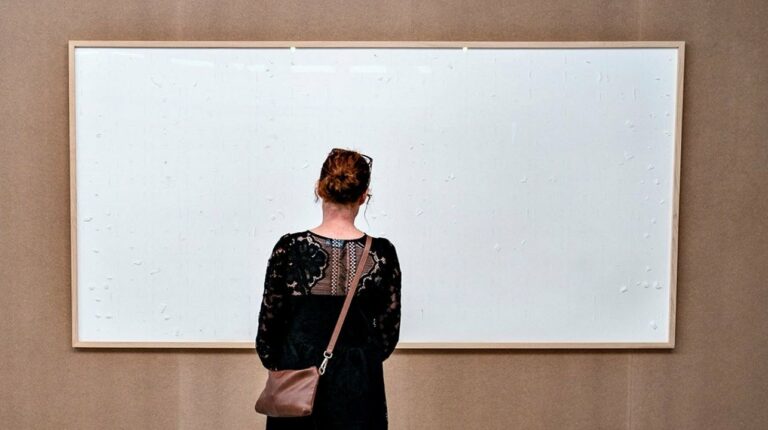Danish Artist Ordered to Repay Museum After Submitting Blank Canvases
In a rather unexpected turn of events, a Danish artist, Jens Haaning, found himself in hot water after receiving a hefty commission from the Kunsten Museum of Modern Art in Aalborg. The artist was entrusted with creating a piece of artwork for the museum but, instead, delivered two empty canvases provocatively titled “Take the Money and Run.”
Money Gone Missing
Back in 2021, Jens Haaning was handed a sum of nearly $84,000 in Danish kroner and euro banknotes to bring his artistic vision to life. The mission? To contribute to the museum’s exhibition on labor conditions and money, aptly named “Work It Out.”
Empty Canvases, Not Artwork
Haaning was specifically tasked with recreating two of his earlier works, which incorporated banknotes onto a canvas to represent the average annual wages in Denmark and Austria. Not only did the museum entrust him with the banknotes, but they also paid him an additional $3,900 for his efforts.
However, when the museum eagerly unveiled the completed pieces, they were met with astonishment and confusion. The canvases were devoid of any artistic expression; they were utterly blank.
The Controversy Unveiled
Upon being confronted, Haaning didn’t back down. He boldly declared, “The artwork is that I have taken the money,” adding, “I encourage others who have just as miserable working conditions as I to do the same. If they are being asked to give money to go to work, then take the money and run.”
Legal Consequences
Unsurprisingly, the museum was not amused. They asserted that Haaning had breached their agreement on how the funds were to be utilized. Consequently, Haaning has now been directed to repay approximately $70,600, in addition to covering $11,000 in court fees.
The Artist’s Perspective
In response to the judgment, Haaning expressed mixed emotions, stating, “I am shocked, but at the same time it is exactly what I have imagined.” He remained resolute in his stance, arguing, “It’s not theft; it is a breach of contract, and the breach of contract is part of the work.”
In Conclusion
This bizarre artistic endeavor has left both the artist and the museum embroiled in controversy, sparking debates about the boundaries of art and contractual obligations. While Haaning may see his act as a thought-provoking piece of art in itself, it has undoubtedly raised questions about the responsibilities that come with accepting commissions in the art world.

